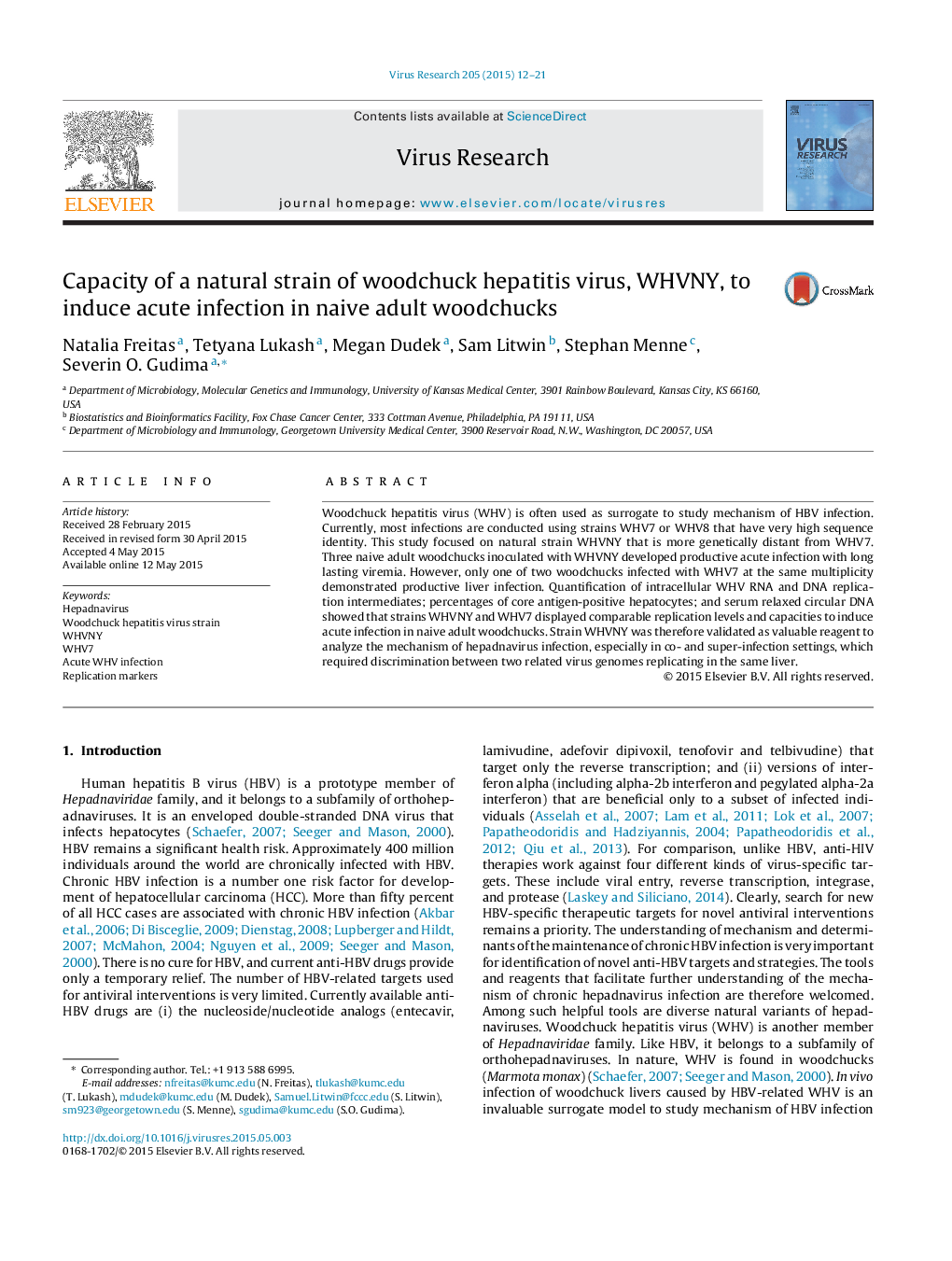| Article ID | Journal | Published Year | Pages | File Type |
|---|---|---|---|---|
| 3428174 | Virus Research | 2015 | 10 Pages |
•Two WHV strains, WHVNY and WHV7, were compared in the settings of monoinfection of naive adult woodchucks.•We compared the percentages of WHV core-positive hepatocytes, and quantified serum rcDNA; and RI-DNA, cccDNA and pgRNA in liver tissues.•We measured WHsAg, anti-WHsAg antibodies and WHV bound to anti-WHsAg antibodies in serum samples.•Strains WHV7 and WHVNY appeared quite comparable in terms of replication parameters and capacity to induce acute infection in naive adult woodchucks.
Woodchuck hepatitis virus (WHV) is often used as surrogate to study mechanism of HBV infection. Currently, most infections are conducted using strains WHV7 or WHV8 that have very high sequence identity. This study focused on natural strain WHVNY that is more genetically distant from WHV7. Three naive adult woodchucks inoculated with WHVNY developed productive acute infection with long lasting viremia. However, only one of two woodchucks infected with WHV7 at the same multiplicity demonstrated productive liver infection. Quantification of intracellular WHV RNA and DNA replication intermediates; percentages of core antigen-positive hepatocytes; and serum relaxed circular DNA showed that strains WHVNY and WHV7 displayed comparable replication levels and capacities to induce acute infection in naive adult woodchucks. Strain WHVNY was therefore validated as valuable reagent to analyze the mechanism of hepadnavirus infection, especially in co- and super-infection settings, which required discrimination between two related virus genomes replicating in the same liver.
